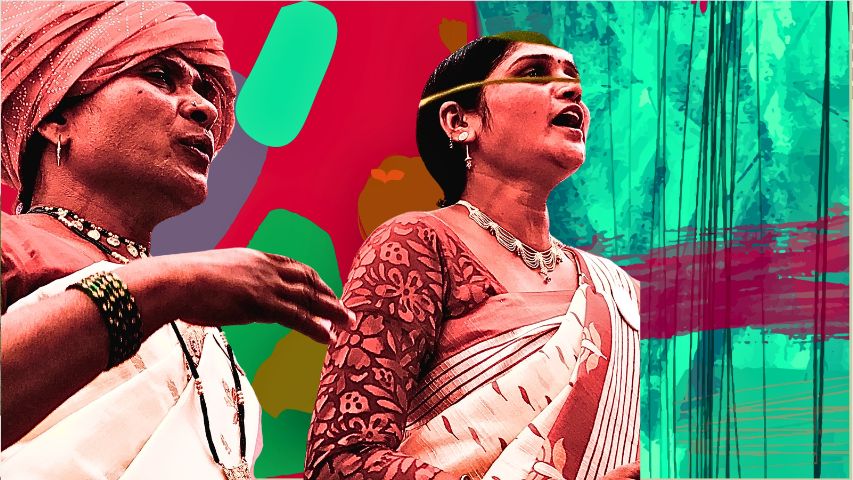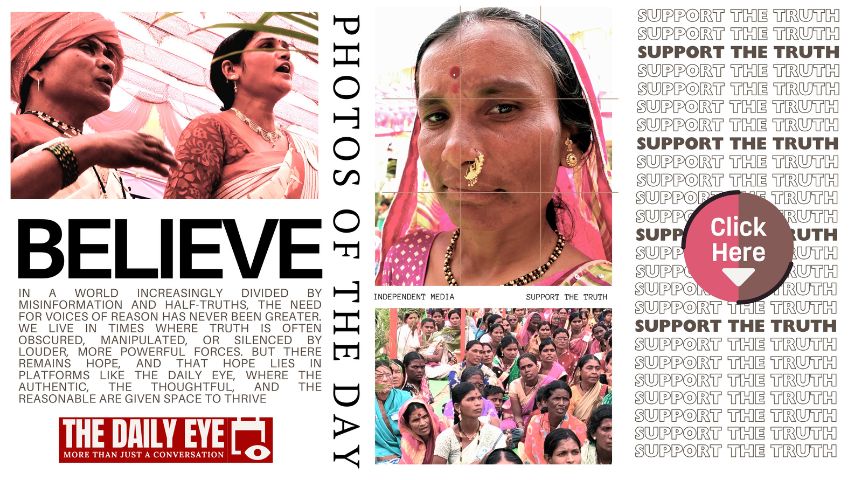
POLITICS: FOCUS ON MAHARASHTRA POLITICS
by Vinta Nanda October 17 2024, 12:00 am Estimated Reading Time: 8 mins, 21 secs"As Maharashtra grapples with political instability, environmental destruction, and rising unemployment, voters face a crucial choice to reset governance and prioritize sustainable growth, transparency, and the well-being of all citizens." Vinta Nanda finds out why…
Photography: Vinta Nanda
Maharashtra, India’s most industrialized state and home to financial capital Mumbai, is facing political instability, unemployment, and environmental degradation. The upcoming state elections are critical for addressing urgent issues like rural-urban divide, corruption, and job creation. Voters must demand a progressive, transparent government to tackle Maharashtra’s youth unemployment crisis, rural distress, and environmental threats, including the destruction of Aarey forest and Mahalakshmi Race Course. With over 2000 farmer suicides in 2023 alone, and increasing urban migration, the need for stable leadership and sustainable development has never been more urgent.
Maharashtra, one of the most industrialized states of India and home to the financial capital, Mumbai, is facing profound political and economic turmoil. Since the 2019 state elections, the state's fractured alliances have created unstable governance, leaving critical economic, social, and environmental issues unresolved. After the Shiv Sena severed ties with the Bharatiya Janata Party (BJP), the subsequent formation of the Maha Vikas Aghadi (MVA) coalition—comprising the Indian National Congress (INC) and the Nationalist Congress Party (NCP)—led to a progressive partnership that eventually crumbled in 2022 because the state’s political landscape has been marked by power struggles, and alleged misuse of central investigative agencies like the Enforcement Directorate (ED) and Central Bureau of Investigation (CBI) by the BJP ruling at the centre, which has been accused of intimidating political leaders and swaying allegiances.
The repercussions of this political turmoil extend far beyond the halls of power. Governance has been marred by conflicts and corruption, with short-term, substandard projects taking precedence over long-term development initiatives.
Political leaders, in power, have become more focused on survival than on tackling the state’s pressing issues. This has left Maharashtra grappling with rising unemployment, an increasing rural-urban divide, and environmental degradation—all of which continue to worsen as the state's governance is paralyzed by political infighting.

Youth Unemployment and Economic Distress: A Growing Crisis
One of Maharashtra’s most pressing issues is youth unemployment. With the youth unemployment rate hovering around 15%, according to the Centre for Monitoring Indian Economy (CMIE), the state’s young workforce faces a grim future. Despite Maharashtra’s robust GDP growth rate of around 7%, there is a stark mismatch between job market demands and the educational system. As a result, many graduates find themselves underemployed, leading to widespread frustration among the state's youth.
This unemployment crisis is closely tied to Maharashtra's political instability. The internal divisions within the ruling party, Mahayuti - a coalition between a BJP diminishing in Maharashtra and breakaways of Shiv Sena and NCP, have led to delays in job creation initiatives. Instead of focusing on sustainable long-term growth, the state’s leadership has been engaged in political manoeuvring, leaving important schemes in limbo. According to the Economic Survey 2023-24, 51% of graduates in India are employable. This means that roughly half of graduates are not immediately ready for employment after college—a statistic that speaks to the failure of the education system to prepare students for the job market.
In the absence of a coherent political strategy to address the youth unemployment crisis, the situation continues to deteriorate. The lack of opportunities has led to growing discontent, particularly among the youth in rural areas, where the economic divide is even more pronounced. Unstable governance has meant that critical reforms, which could align the state’s educational infrastructure with market demands, have been consistently delayed.
Equally concerning is that 61% of Maharashtra's population depends on agriculture and related activities for their livelihood. The agriculture sector is one of the most important sectors of the state's economy, but contributing only 11.9% to its GDP. While 24.14% of working age population is employed in agriculture, 25.4% cultivators comprise total of labour force and 27.3% comprise agricultural labour force. Maharashtra is a major producer of cotton, soybean, jowar, arhar, and most of the cereals in India.
Maharashtra’s agricultural sector has long struggled with poor infrastructure, erratic rainfall, and outdated farming practices. The Economic Survey of Maharashtra 2022-23 revealed that agricultural productivity remains volatile due to these persistent issues. Political instability has worsened this condition, as fragmented leadership has been unable to offer sustainable agricultural solutions.
The neglect of rural Maharashtra is further accounted by the staggering number of farmer suicides. Between 2018 and 2023, Maharashtra recorded a staggering number of farmer suicides, with 2851 farmers ending their lives in 2023, a tragic indication of the distress in the state's agricultural heartland. These deaths reflect not only the failures in agricultural policy but also the broader neglect of rural areas. Political leaders, preoccupied with their own internal conflicts, have failed to address the systemic issues that drive rural distress, focusing instead on managing party negotiations and conflicting coalition politics.
The Rural-Urban Divide: Widening Disparities
Maharashtra’s rural-urban divide is another critical issue exacerbated by political instability. While cities like Mumbai and Pune contribute over 80% of the state’s GDP, rural areas remain severely underdeveloped. According to the Economic Survey of Maharashtra 2023, over 55% of the state’s population still lives in rural areas, where basic amenities such as clean water, reliable electricity, and quality education are scarce.
The lack of investment in rural infrastructure has driven mass migration to cities, burdening urban areas that are already overstressed. Mumbai, for example, is projected to house 28 million people by 2035, placing immense strain on the city’s infrastructure and services. This migration is not just a symptom of economic disparity but also a reflection of the state’s failure to create opportunities in semi-urban and rural regions. Political instability has meant that long-term rural development projects have been sidelined, with coalition negotiations taking precedence over governance.
The consequences of this divide are stark: rural Maharashtra continues to lag behind in terms of health, education, and economic growth, while cities like Mumbai struggle with overpopulation, inadequate housing, and rising pollution levels. This imbalance has created two vastly different realities within the state—one of rapid urban development and another of rural stagnation and neglect.
Environmental Degradation: The Price of Unregulated Development
Maharashtra is also facing a serious environmental crisis, much of which is driven by unchecked urban development and political negligence. As India’s financial capital, Mumbai has long been a hub for industrial expansion, but this growth has come at a significant cost to the environment. Deforestation, air pollution, and water contamination are on the rise, with green spaces like the Aarey forest and Mahalakshmi Race Course under threat.
The destruction of Aarey forest, one of Mumbai’s vital green lungs, for the construction of the Mumbai Metro has sparked widespread protests from environmentalists and citizens alike. Meanwhile, plans to convert the Mahalakshmi Race Course into a real estate development are raising concerns about the city’s diminishing open spaces as well as prominent leaders of the opposition parties jumping sides to avail of benefits that this behemoth real estate development promises to the greedy. These development projects reflect a broader trend in Maharashtra, where political instability has allowed environmentally destructive policies to go unchecked.
Mumbai, which is already one of the most polluted cities in India, has seen over 10,000 premature deaths annually due to air pollution, according to the World Bank. Yet, political leaders, focused on short-term economic gains, have consistently undermined environmental regulations. Development projects are often pushed through without proper environmental assessments, leading to the destruction of biodiversity, displacement of indigenous communities, and worsening living conditions for urban residents. As the political landscape remains unstable, the lack of leadership and vision for sustainable development is costing Maharashtra its natural heritage.
Corruption and Infrastructure Failures: Maharashtra’s Governance at a Crossroads
Corruption remains one of the most pervasive issues in Maharashtra, and it is deeply intertwined with the state’s political instability. Public infrastructure projects, such as roads, bridges, and statues, are now being executed with minimal oversight, often resulting in subpar work. The collapse of the Shivaji statue in Kolhapur, a significant cultural and political symbol, is just one example of how corruption and political survival have taken precedence over quality governance.
This corruption has been further fuelled by the fractured political alliances within the state. The BJP, leveraging agencies like the ED and CBI, has targeted opposition leaders under the guise of anti-corruption investigations. Many politicians from the NCP and Shiv Sena have switched sides to align with the BJP, conveniently exonerated of any previous charges. This brazen political environment has allowed corruption to thrive, with political protection often shielding leaders from accountability.
The result has been a deterioration in the quality of public services and infrastructure. Slum rehabilitation projects, crucial for a city like Mumbai where over 9 million people live in slums, have been delayed or executed poorly due to corruption. These projects are now seen as lucrative opportunities for political leaders to secure contracts and kickbacks, while millions continue to live in unsafe and unhygienic conditions.
The Need for Stable, Transparent Leadership
Maharashtra is at a crossroads. The state’s political instability, exacerbated by fractured alliances, corruption, and the misuse of central agencies, has stalled progress in critical areas like employment, rural development, environmental protection, and infrastructure. As voters head to the polls, they must keep in mind the urgent need for stable, transparent, and progressive leadership that can address these challenges head-on. Without a government that prioritizes long-term growth, equity, and sustainability, Maharashtra risks falling deeper into crisis. Its youth, women, and marginalized communities are already bearing the brunt of these failures, and the state’s future hangs in the balance.
The upcoming elections offer an opportunity to reset the state’s governance trajectory, but only if voters choose leaders who are committed to transparency, good governance, and the well-being of all citizens.





-173X130.jpg)
-173X130.jpg)
-173X130.jpg)

-173X130.jpg)

-173X130.jpg)
-173X130.jpg)